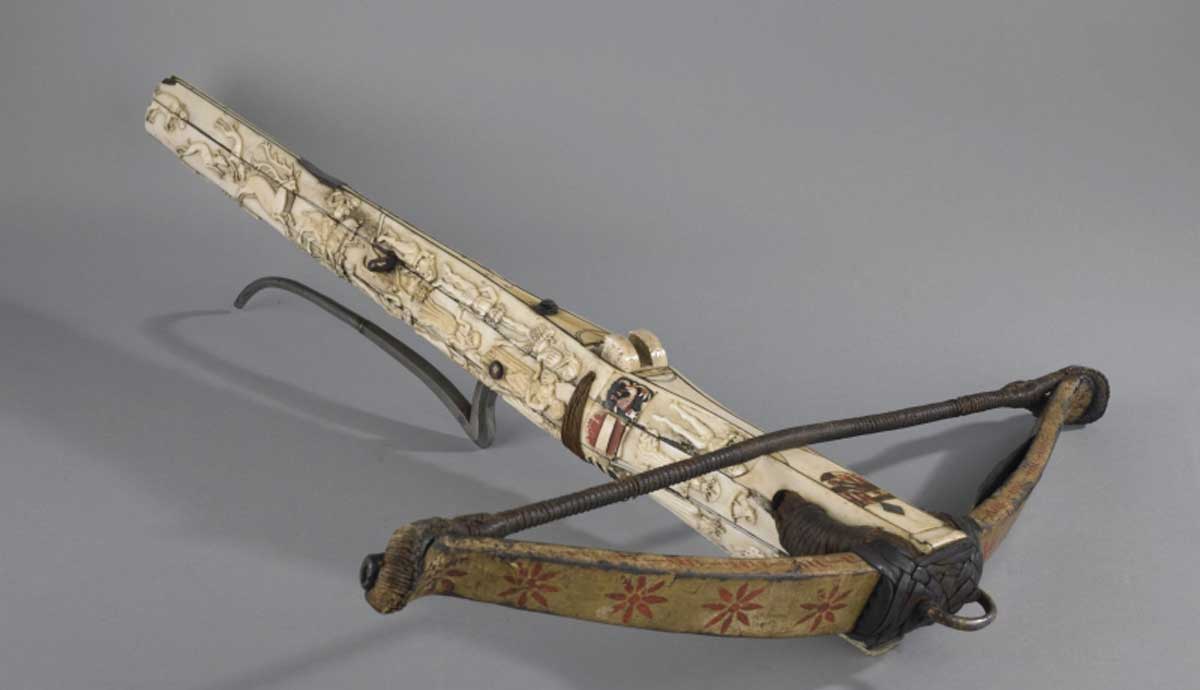
Regardless to how the crossbow was viewed on the battlefield, it was ever a high-status hunting weapon. Unlike the longbow, a crossbow could be kept fully spanned for a considerable amount of time. The crossbows of noblemen sometimes had a veneer of intricately-carved stag horn and/or elaborate patterned inlays. I recently commissioned a fifteenth-century hunting crossbow from Danilo "Tod" Todeschini of Tod's Workshop. Tod's expert craftsmanship is featured extensively in Mike Loades's bookThe Crossbow.
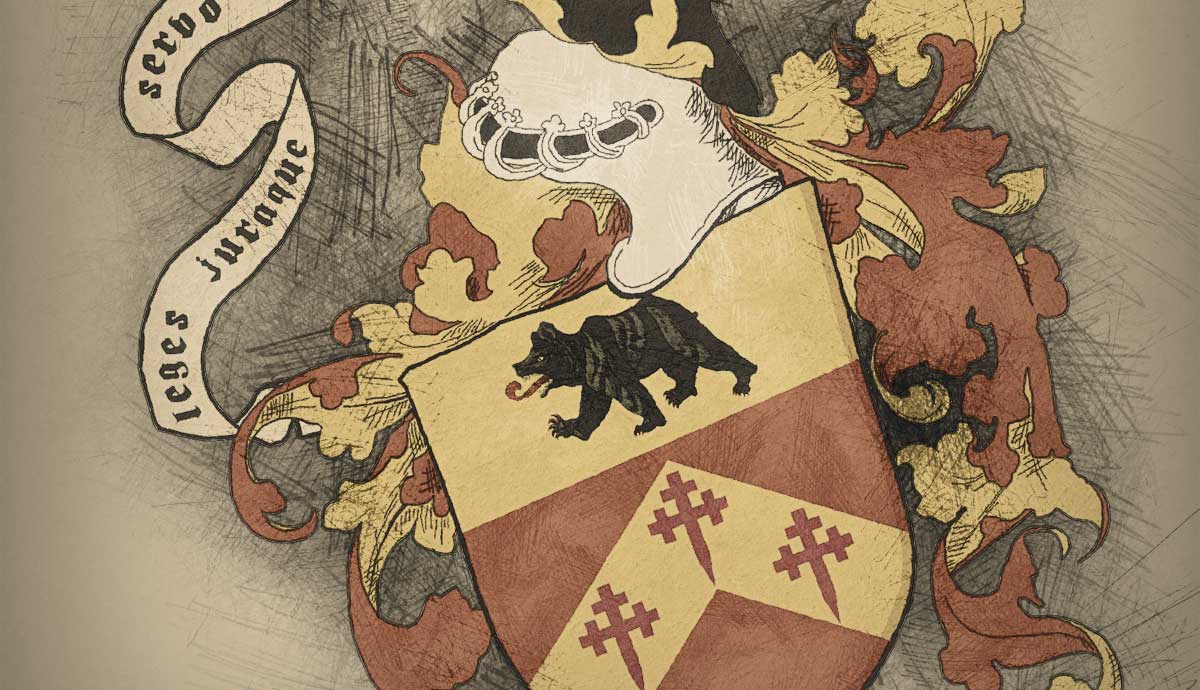
Every knight must have his own unique armorial to differentiate himself in the lists. The following is my assumed armorial achievement:
Arms: Gules, on a Chevron Or three cross crosslets fitchy of the first, on a chief of the second a Bear Sable passant langued and amred of the first.
Crest: A demi-bear Sable and langued gules holding between its forepaws a sword.
Motto: leges juraque servo. I service justice and the law
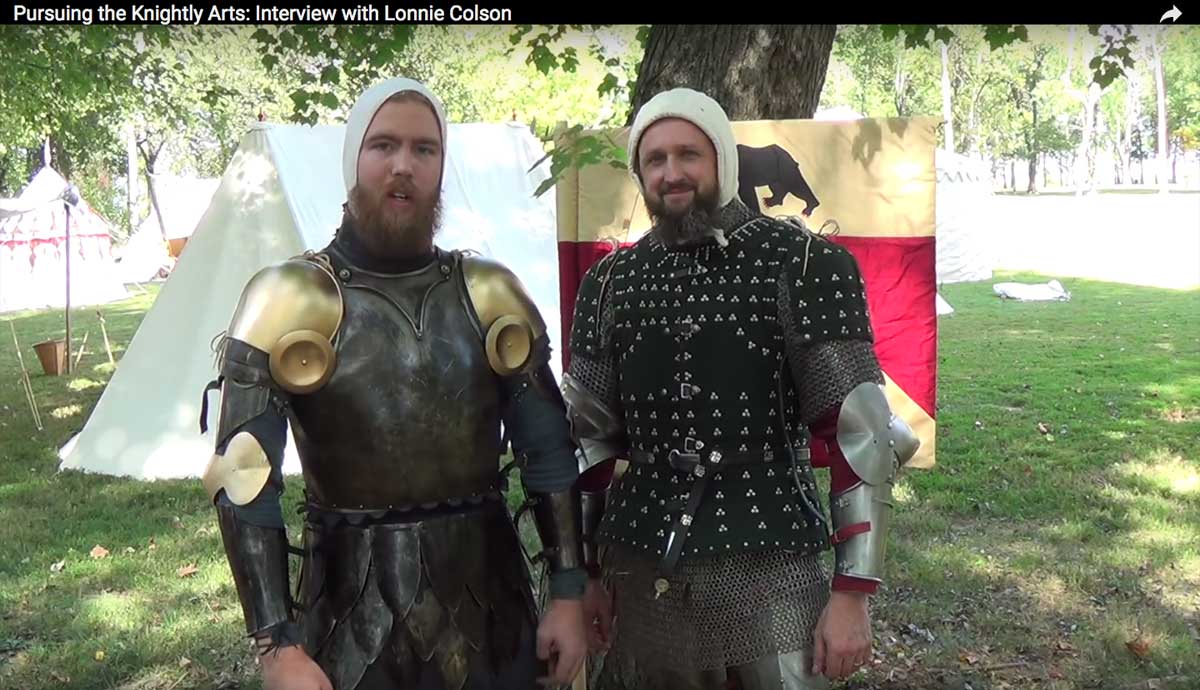
Last month I joined scores of other medieval re-enactors at the Oak Grove War Memorial Walking Trail, site of this year's The Days of Knights event. The mile-long trail weaves in and around a wooded park that serves as a frisbee golf course. The encampment was laid out chronologically along the trail like a visual timeline of European history from the Vikings to the early Renaissance. It was also my first opportunity to meet a number of well-known personalities from Facebook and YouTube. Among them were Ian LaSpina of Knyght Errant, ...
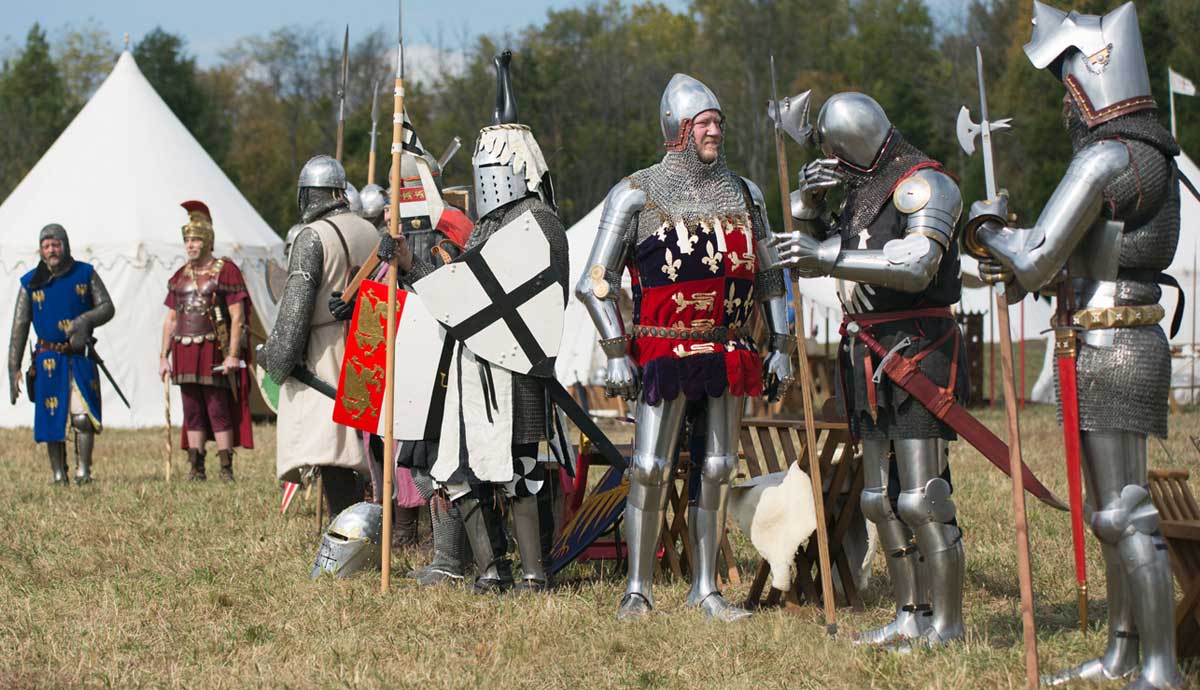
Several months ago I made a fairly important resolution for 2017. This was not one of those half-hearted pledges to give up some enjoyably bad habit most people make on New Year’s Day only to succumb to temptation a few hours later. To be fair, like more than a few other resolutions I have previously made, there was not exactly a considerable amount of critical thinking involved. Nevertheless, it would require a major personal commitment to accomplish: I was going to the Days of Knights this year. Several months ago I made a decision ...
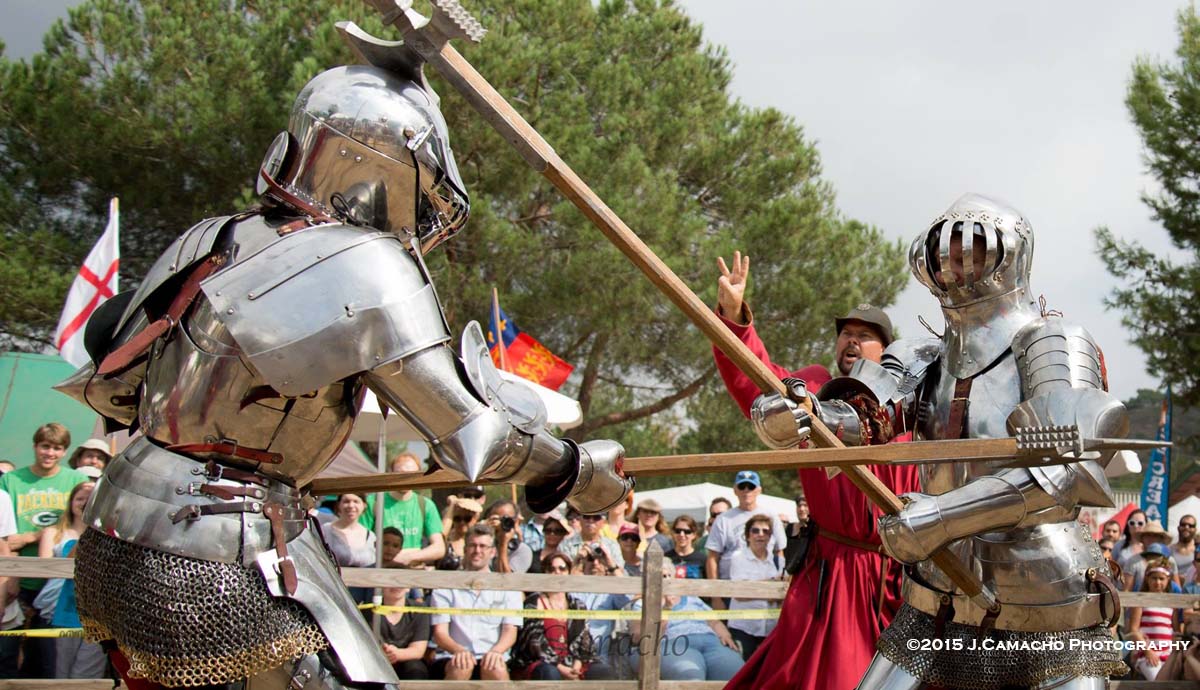
Whether judicial trial by combat, a chivalric duel, or a deed of arms, the pollaxe was the primary weapon of choice between armoured men. By the fifteen century, the sword and dagger were considered secondary weapons, only capable of causing harm to an opponent by exploiting the small gaps in his plate armour. The pollaxe was essentially an axe, hammer, and spear affixed atop a sturdy shaft about the height of its wielder. Near the beginning of the fifteenth century, an anonymous Milanese fencing master in service to Philip II "the Bold" ...
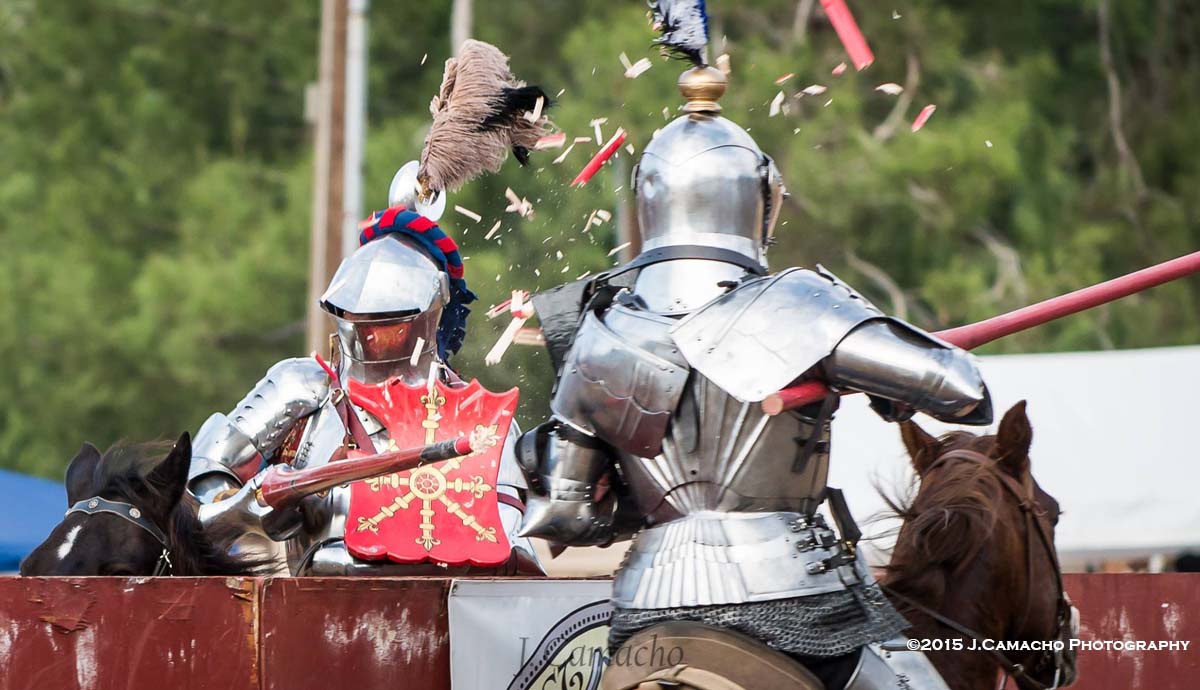
Prior to the 15th century, jousters met in an open field and could pass on the right or the left side. Riders and horses were prone to severe injury in the event of a collision. In 1429, at a joust in Arras, France, a rope was hung with cloth to separate the contestants. It was called the tilt or toile. It is likely that the tilt barrier originated in Italy as early jousts with a barrier were referred to as the Italian Course. It did not reach England until the 1430s. Eventually, the cloth barrier evolved into a sturdy wooden wall. Prior to the 15th century, jousters met in an ...
